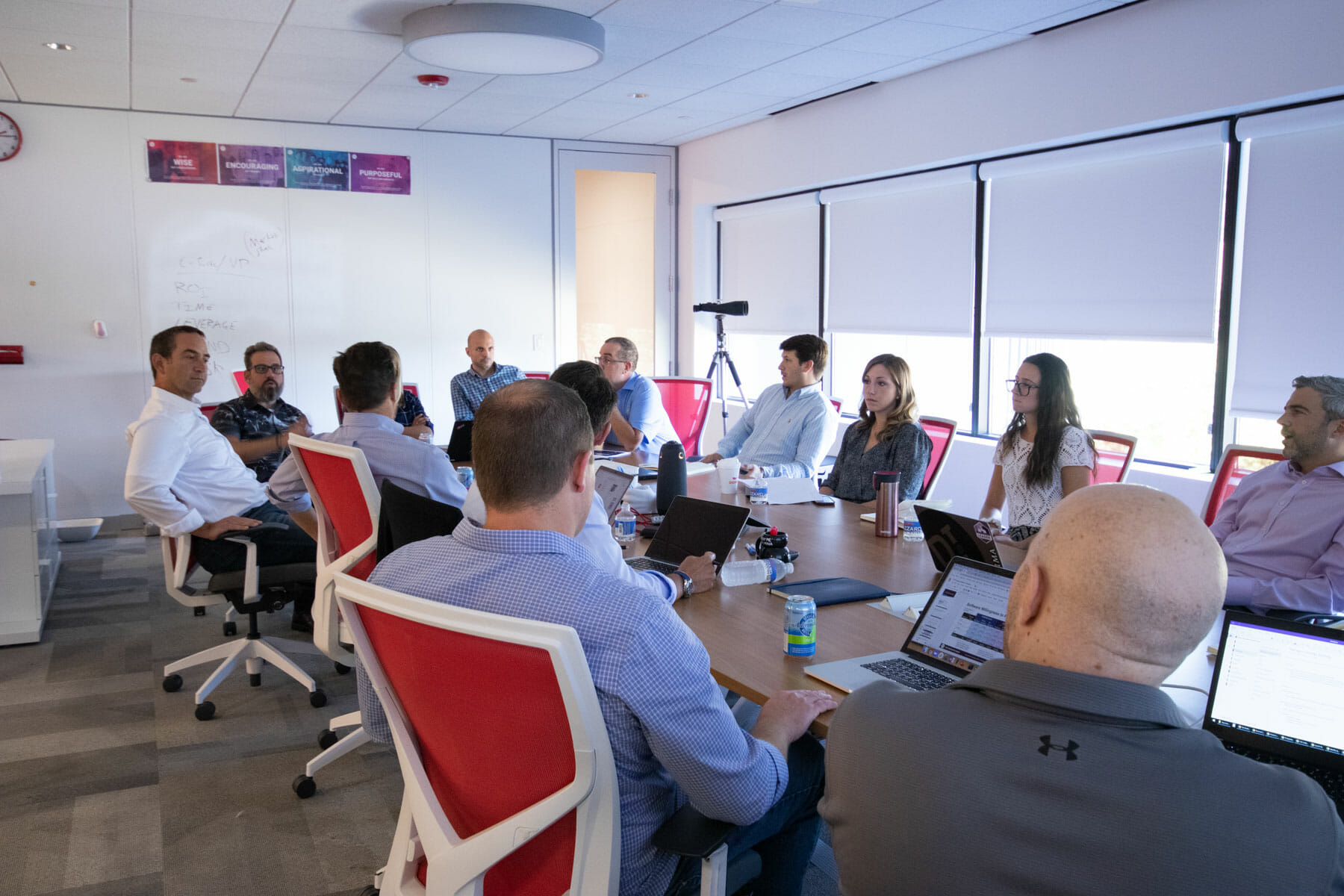Myths abound about generational differences and how age diversity can impact a workspace. The reality is every generation is internally diverse, and there’s no way to meaningfully generalize someone belonging to any generational group. Managing individuals and optimizing workplace talent and productivity require a clear understanding of what generational challenges could crop up.
How your multigenerational teammates work together is a dynamic you should proactively consider when hiring, managing, and communicating with your employees or coworkers.
The oldest members of Generation Z have already entered the workforce, while many Gen Xers are still working well into their retirement years. This means most businesses operating today are hiring and functioning with one of the most generationally diverse workforces in recent years. Bridging these generational gaps within your internal business practices will prove paramount if you’re looking to create a sustainable organization well into the future.
By having a keen sense of generational differences—and how each generation tends to interact with others—you can optimize your prospective talent pool and create powerful, high-performing teams for effectively accomplishing work.

Understanding the different generations in your workforce
Before you tailor your leadership and management practices to each generation, you should understand the distinctions between all those working today and what motivates them in the workplace.
As the oldest of the three primary age groups working, Gen Xers (those born between 1965 and 1980) tend to value a strong work ethic over all other workplace qualities. Their dedication to accomplishing their own tasks means many employees in Generation X are less inclined to share their insights or issues with others. Surprisingly, their loyalty to their employer doesn’t correspond to greater advancements in the company when compared to their younger coworkers. According to recent findings from DDI, millennials have received more promotions than Generation X in the last five years—despite only 37% of Generation X contemplating leaving their current position for personal career development.
Conversely, millennials are less willing to tough out challenging situations and have a greater tendency to voice their concerns in the workplace. Deloitte’s 2019 survey of millennials reveals that, despite popular opinion, the younger generations are equally ambitious—although 49% of the polled millennials said they’d quit their current positions within the next two years. Based purely on size, millennials have the greatest impact on today’s workforce. The Pew Research Center reports that Generation Y constitutes over one-third of the total labor force—meaning engaging and retaining this generation should be a top priority for business leaders.
The youngest generation is the one most intimate with technology in both their work and personal lives. Generation Z is shaping the environments, values, and benefits that drive business with their expectations for flexible work opportunities and meaningful work. They highly value work-life balance and expect opportunities like remote work and flexible work hours in their places of employment.
Recruiting with the multigenerational workforce in mind
Working with the right kinds of people starts with hiring the right kinds of people.
It’s a simple ideology that proves difficult to master in practice—especially when qualifying candidates from a multigenerational talent pool. How do you determine who the “right” person is when each generation prioritizes different work qualities? How do you compare candidates that span a broad generational spectrum?
As much as you might be more inclined to hire younger potentials for their flexibility and energy or older candidates for their experience, it’s important to hire across multiple age brackets to avoid creating informational or cultural silos in your work environment.
Fortunately, there are a few simple practices you can include in your recruiting strategy to ensure you’re casting your net across all areas of the talent pool:
- Optimize for mobile. With both younger and older generations opting for mobile-first internet use, your job board should be tablet- and smartphone-friendly.
- Revamp your benefits program. Create a holistic benefits package by coupling traditional policies (e.g., retirement and healthcare packages) with innovative privileges (e.g., flexible and remote work) to attract boomers and Gen Z alike.
- Hire for skills and attitude. The key to strong multigenerational teams is self-awareness and good team dynamics. While it’s important to hire candidates who display the core competencies needed for their position, your recruiting teams should also consider how candidates align behaviorally with the team they’re joining.
Managing across generations with emotional intelligence
Emotional intelligence, or EQ, is at the crux of businesses that successfully unify their teams—regardless of their individual or generational components. While emotional intelligence is an essential skill for every team member to develop, it’s acutely important for those in people management positions.
Emotional intelligence is defined as the ability to recognize, understand, and manage both your own emotions and the emotions of others. In a business context, this means you understand how emotions can influence work tendencies and behaviors and can tailor your management tactics on a case-by-case basis.
Managers with emotional intelligence consider all possible angles when working with others, which is invaluable when navigating cross-generational relationships. Not only do successful leaders have a comprehensive understanding of what they do, they’re also deeply passionate about their jobs and feel compassion for those they oversee, as indicated by the 2018 People Management Report. Of the employees surveyed, 76% indicated recognition for good work was a top trait for great managers, while 55% stated that bad managers demonstrated a lack of concern for their careers and personal development.
Using emotional intelligence to understand the tendencies each generation has is essential for those looking to lessen the friction of multiple generations working together.

Bridging the generational gap with new technology
Investing in new business tools and technology should be seen as a single piece in the multigenerational communication strategy that your company implements. This is in part because of the vast difference in technological familiarity different generations bring to the table. As an example, there are some boomers and Gen Xers who just aren’t as comfortable with the many different tech interfaces and systems because they have less exposure. On the other hand, Gen Y grew up with the internet and often heavy technology use.
Fortunately, many pieces of technology that exist today offer services in the median—easy for both older and younger users to understand and implement in their daily communication strategies. One such example is the internet telephony service, VoIP. VoIP, or Voice over IP is a phone system that uses the internet to relay packets of voice information. VoIP offers the familiar services of phone systems that older employees are familiar with while also delivering the benefits of new technology—such as mobile access and global connectivity—that the younger generation appreciates.
Many companies have also transitioned to scheduling and organization applications powered through the cloud to unite generations X, Y, and Z. Calendar syncing software, specifically, uses the cloud to rapidly disperse and update information over the internet. Calendar applications are often designed with highly-intuitive user interfaces, which decreases the learning curve—especially for employees who are less tech-savvy. Smart calendar software is ideal for businesses who are struggling to connect their multigenerational teams because they allow users to view their coworkers’ availability, invite them to meetings, and schedule meeting spaces without the risk of overbooking.
The big picture? The multigenerational spectrum is more similar than it is different.
If you’re a manager or a part of your organization’s leadership team, keep in mind that each generation really isn’t that different. The research tells us that, despite minor differences, large generational differences are a workplace myth.
Remember that people are people. The individuals that make up your organization are unique and won’t fit into an overgeneralization of their generation. Learn about each individual using tools such as behavioral assessments to better understand what drives them at work. And despite differences in your employees’ level of experience, age, or position, the motivators that make them productive contributors in your organization will remain largely unchanged.
Join 10,000 companies solving the most complex people problems with PI.
Hire the right people, inspire their best work, design dream teams, and sustain engagement for the long haul.








